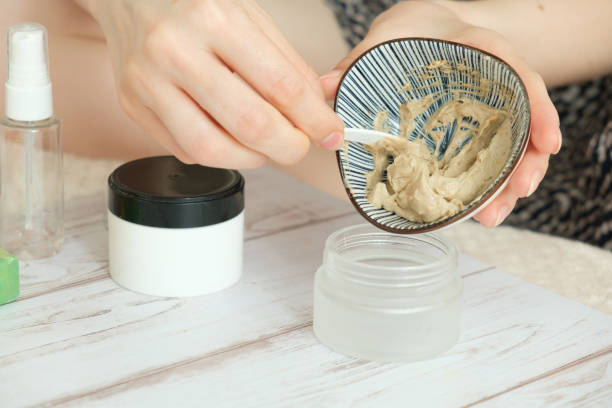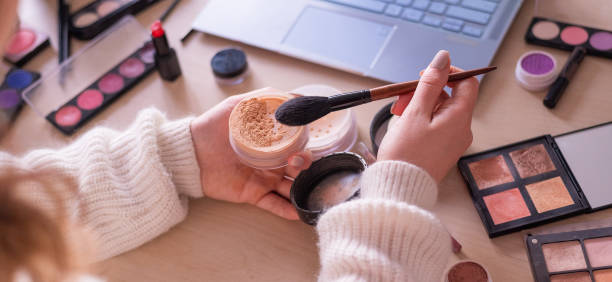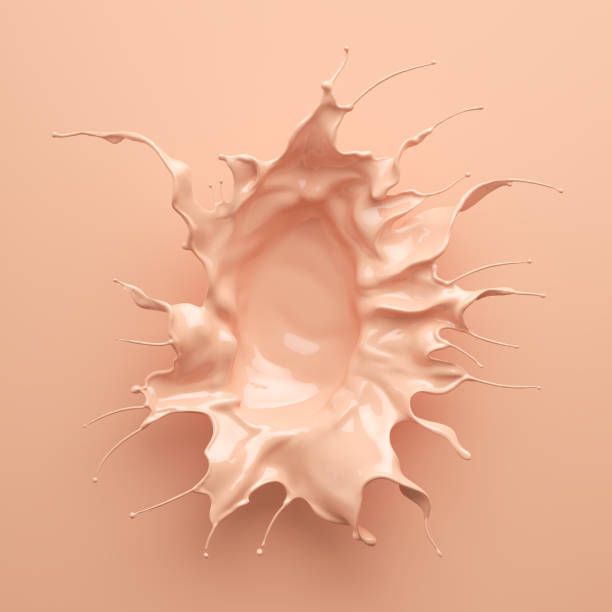Introduction
Foundation cream, the quintessential component of any makeup routine, serves as the canvas upon which we create our desired look. Its evolution from ancient civilizations to modern formulations mirrors the beauty industry’s continuous innovation. In this comprehensive guide, we will delve into the world of foundation creams, unraveling their nuances, helping you choose the perfect match for your skin, and exploring the latest trends and innovations.
Understanding Foundation Cream

Definition and Purpose
Foundation, in its essence, is a makeup product designed to even out skin tone, conceal imperfections, and create a smooth base for other makeup products. It acts as the cornerstone of every makeup routine, enhancing natural beauty and boosting confidence.
Types of Foundation Formulations
Foundation creams come in various formulations, each catering to different preferences and skin types. Liquid foundations offer a lightweight and natural finish, whereas cream foundations provide fuller coverage. Powder and stick foundations offer convenience, making them ideal for on-the-go touch-ups.
Choosing the Perfect Foundation
Skin Type Analysis
Understanding your skin type is crucial in selecting the proper foundation. For oily skin, opt for oil-free and mattifying formulas; for dry skin, choose hydrating foundations that provide moisture. Combination skin benefits from balanced formulations, while sensitive skin requires hypoallergenic and fragrance-free options.
Impact of Climate and Environment
The climate and environment you live in play a significant role in your foundation choice. In humid climates, opt for long-wear and waterproof foundations, whereas in dry climates, hydrating foundations provide the necessary moisture. Consider environmental factors such as pollution and UV exposure when choosing foundations with added skincare benefits.
Guide to Finding the Right Shade
Finding the perfect foundation shade involves understanding your skin’s undertones—whether warm, cool, or neutral. Warm undertones suit shades with yellow or golden tones, while cool undertones match shades with pink or blue tones. Neutral undertones have a balance of both and can wear a variety of shades.
Tips for Testing Foundation
When testing foundations in-store or online, apply a small amount on your jawline to check for a seamless blend with your skin. Natural light is the best evaluator, ensuring the foundation matches your skin tone in different lighting conditions.
Ingredients and Formulations

Key Ingredients and Effects
Foundation creams contain a myriad of ingredients, such as hyaluronic acid for hydration, antioxidants for skin protection, and minerals for a natural glow. Understanding these ingredients empowers you to make informed choices based on your skin’s needs.
Organic, Vegan, and Cruelty-Free Options
The beauty industry has witnessed a surge in organic, vegan, and cruelty-free foundation options. These formulations prioritize natural and ethical ingredients, catering to environmentally conscious consumers.
Foundation SPF and Its Role
Many foundations include SPF (Sun Protection Factor) to shield the skin from harmful UV rays. SPF-infused foundations provide added sun protection, making them ideal for daily wear. However, it’s essential to complement foundation SPF with dedicated sunscreen for comprehensive protection.
Pros and Cons of Different Formulations
Each foundation formulation has its advantages and drawbacks. Liquid foundations offer buildable coverage and a natural finish but may require setting powder. Cream foundations provide excellent range but may feel heavy on the skin. Powder foundations offer a matte finish but might accentuate dry patches.
Application Techniques

Step-by-Step Guide to Application
Achieving a flawless foundation application involves preparation, application, and blending. Start with clean, moisturized skin. Apply foundation using a brush, sponge, or fingertips, blending from the center of the face outward. Build coverage gradually for a natural look.
Tools and Brushes for Application
Various tools cater to different foundation formulations. Brushes provide precise application and are suitable for liquid and cream foundations. Sponges offer a seamless blend, especially for liquid foundations. Fingertips work well with cream and stick foundations, allowing the warmth of your skin to blend with the product effortlessly.
Common Mistakes to Avoid
Avoiding common mistakes ensures a seamless foundation application. Overusing products, neglecting to blend into the neck, and mismatched shades are pitfalls to avoid. Additionally, setting the foundation with translucent powder prevents creasing and enhances longevity.
Tips for Blending Foundation
Blending the foundation seamlessly is critical to a natural look. Use tapping and buffing motions to blend foundation into the skin, ensuring there are no visible lines or boundaries. Combining along the jawline and hairline prevents harsh edges, creating a flawless finish.
Foundation for Special Occasions

Bridal and Wedding Makeup
Bridal makeup requires long-lasting foundation to withstand emotional moments, photography sessions, and festivities. Opt for waterproof and transfer-resistant foundations that offer a radiant finish without flashback in photos.
Foundation for Photoshoots and Events
Photography and events demand foundation products that don’t reflect light, leading to a phenomenon known as flashback. Choose foundations labeled as “photo-friendly” or “flashback-free” to ensure your complexion looks impeccable in photographs.
Foundation for Stage Performances and Theater
Stage makeup requires a foundation with high coverage to withstand bright stage lights. Use stage makeup techniques, including color correction and contouring, to create a defined look visible from a distance.
Celebrity Makeup Artists’ Secrets
Professional makeup artists employ various techniques to achieve flawless red carpet-looks. These include using primer for a smooth base, mixing foundations for a customized shade, and setting makeup with setting spray to enhance longevity.
Foundation and Skincare

Interaction with Skincare Products
Foundation interacts with skincare products, emphasizing the importance of a well-prepped canvas. Cleanse, moisturize, and apply sunscreen before foundation application. Allow skincare products to absorb fully before applying foundation for optimal results.
Incorporating Foundation into the Skincare Routine
Foundation with skincare benefits, such as hydrating ingredients and antioxidants, enhances the overall skincare routine. These foundations provide coverage while nourishing the skin, offering a dual-purpose solution for busy individuals.
Foundation Hacks for Mature Skin and Common Concerns
Mature skin benefits from hydrating and lightweight foundations that don’t settle into fine lines. Color correctors help neutralize redness or dark circles. For common concerns like acne or rosacea, choose foundations with buildable coverage and non-comedogenic properties.
Removing Foundation Effectively
Proper makeup removal is essential for skin health. Double cleansing involves using a cleansing oil or micellar water followed by a gentle foaming cleanser to remove makeup residue effectively. Thoroughly clean the skin to prevent clogged pores and breakouts.
Foundation Trends and Innovations

Emerging Trends in Foundation
Foundation trends evolve, reflecting changing beauty standards and consumer preferences. Current trends include skin-like finishes, lightweight formulations, and inclusive shade ranges catering to diverse skin tones.
Inclusive Foundation Shades
Diversity in the beauty industry is essential. Inclusive foundation shades encompass a wide range of skin tones, ensuring everyone can find their perfect match. Brands embracing inclusivity contribute to a more representative and accepting beauty landscape.
Sustainable and Eco-Friendly Packaging
Eco-conscious consumers seek foundations packaged in sustainable materials. Brands are responding by adopting recyclable, biodegradable, and eco-friendly packaging options, aligning with the global shift towards sustainability.
Technology-Driven Innovations
Technology continues to shape foundation formulations. Innovations such as color-matching apps, AI-driven shade recommendations, and customizable foundation formulations empower consumers, providing tailored solutions to meet individual needs.

Conclusion: Empowering Your Beauty Journey
In this journey through the world of foundation creams, we’ve explored their diverse formulations, application techniques, and the symbiotic relationship between foundation and skincare. Armed with knowledge about choosing the proper foundation for your skin type, understanding ingredients, and staying updated with trends, you’re well-equipped to enhance your natural beauty confidently.
FAQ Section
Q1: Can I mix different foundation shades to create my custom color?
A: Yes, mixing foundation shades allows you to create a customized color that matches your unique skin tone perfectly. Experiment with small quantities until you achieve the desired shade.
Q2: How often should I replace my foundation to ensure its effectiveness?
A: The foundation typically has a shelf life of 6-12 months after opening. Regularly check for changes in texture, smell, or color, indicating that it’s time to replace your foundation for optimal performance and safety.
Q3: Can foundation be used as a substitute for sunscreen?
A: While some foundations contain SPF, they might not provide adequate sun protection. It’s advisable to use a dedicated sunscreen with a broad-spectrum SPF of 30 or higher to shield your skin from UV rays effectively.
Q4: Is it necessary to use a primer before applying foundation?
A: Using a primer creates a smooth base for the foundation, helps makeup adhere better, and prolongs its wear. However, if you have a good skincare routine, you can skip the primer, especially for a natural, everyday look.
Q5: Can foundation be used on all skin types, including sensitive skin?
A: Many foundations are formulated to be hypoallergenic and suitable for sensitive skin. Look for foundations labeled as “fragrance-free” and “non-comedogenic” to minimize the risk of irritation. Patch testing a small amount on your skin can also help determine if a |foundation| is compatible with your sensitive skin.
Q6: How can I prevent my foundation from oxidizing and changing color throughout the day?
A: Oxidation, where |foundation| darkens upon contact with air and skin oils, can be minimized by using a primer specifically designed to prevent oxidation. Setting your |foundation| with a translucent powder and opting for long-wear or matte foundations helps maintain the intended color throughout the day.
Q7: Is it necessary to use a different foundation for special occasions, or can I use my everyday foundation?
A: Special occasions often involve more extended hours, photography, and different lighting conditions, making it beneficial to use a |foundation| designed explicitly for such events. Special occasion foundations are often long-wearing, provide high coverage, and offer a flawless finish, ensuring your makeup looks impeccable throughout the event.
Q8: Can foundation be used to cover specific skin concerns such as acne scars and redness?
A: Yes, foundation can effectively conceal various skin concerns, including acne scars and redness. Choose a full-coverage |foundation| or a concealer with a creamy texture. Color-correcting products in green tones can help neutralize redness before applying |foundation| for a more even complexion.
Q9: How can I make my foundation last longer, especially on hot and humid days?
A: To make your |foundation| last longer in hot and humid conditions, start with a mattifying primer to control excess oil. Opt for long-wear or waterproof |foundation| formulas. Set your |foundation| with a translucent powder to absorb oil and minimize shine. Carrying blotting papers for quick touch-ups throughout the day can also help maintain a fresh look.
Q10: Are there specific foundation application techniques for different face shapes?
A: Yes, different face shapes can benefit from specific |foundation| application techniques. For example, individuals with a round face may contour along the temples and under the cheekbones to add definition. Those with a heart-shaped face might focus on balancing the forehead and chin. Understanding your face shape allows you to highlight your features effectively and create a more balanced appearance.
In your pursuit of flawless skin, remember that makeup is an art, and your face is the canvas. With the proper foundation knowledge and techniques, you can express your unique beauty confidently and authentically. Cheers to your empowered beauty journey!

